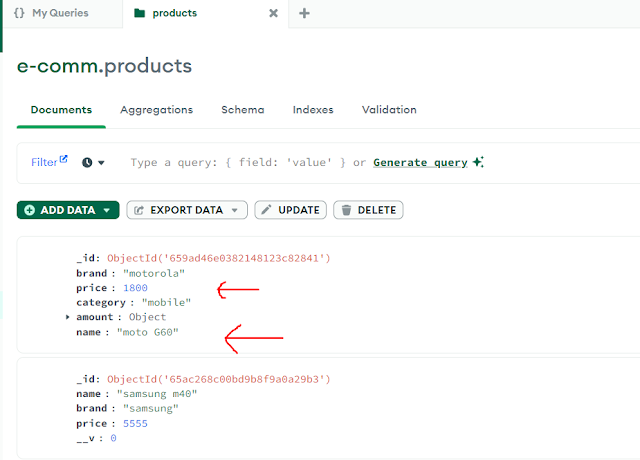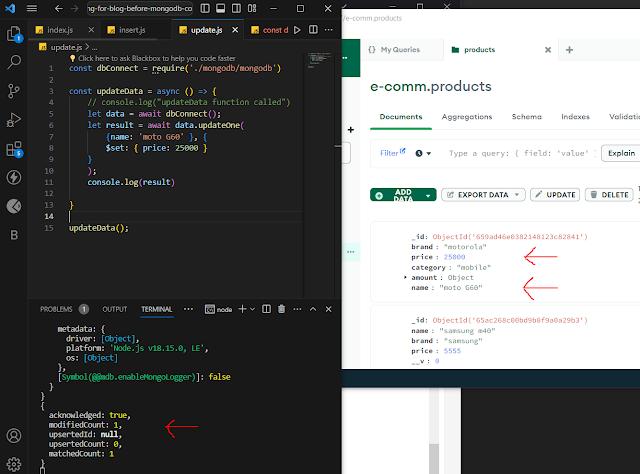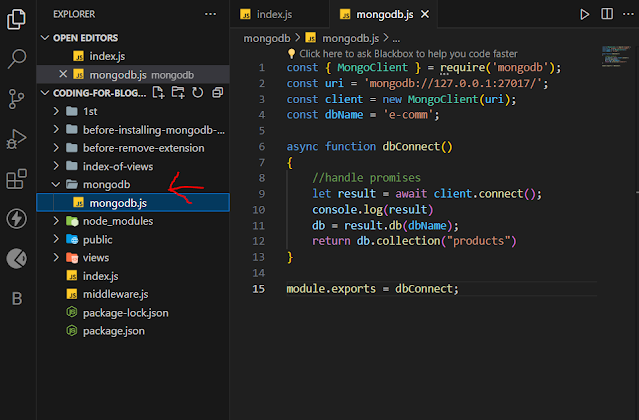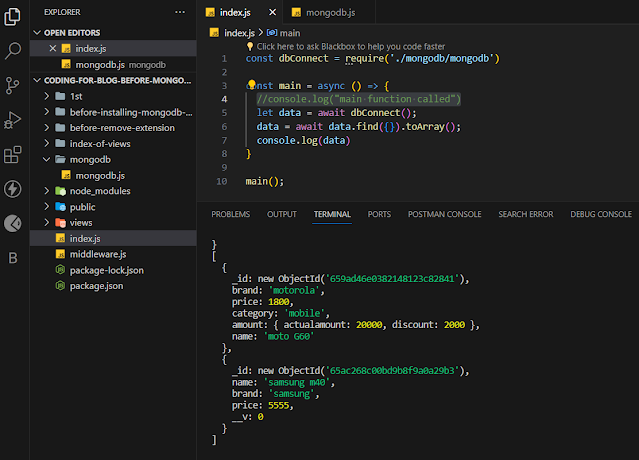Delete API delete data from MongoDB
This blog and in upcoming blog we will see
mongodb basic and how is it work with installation and after
installation we should not face
any problem while making Database, collection(table) and using the data in nodejs even whenever we will make
API. Read data from mongodb in nodejs
-
# Read Data from MongoDB
-
# Make file for db connection
- # Handle Promise
Now in this blog we will consider about mongoDB basic command which we can use
to create Database, collection etc.
What is MongoDB
MongoDB is a popular open-source NoSQL (non-relational) database management system. NoSQL means no structure like it is look like an object while in SQL it is a structure query language like SELECT CustomerName, City FROM Customers; (The SELECT statement is used to select data from a database.) But NoSQL database is useless...NOT completely because of whenever we want add extra column in database then it is possible through NoSQL MongoDB.
MongoDB installation - CLICK HERE
MongoDB Basic Command -
CLICK HERE
About MongoDB vs SQL - CLICK HERE
CRUD in MongoDB - CLICK HERE
Object Like -
{
"_id": {
"$oid": "659ad46e0382148123c82841"
},
"name": "moto G60",
"brand": "motorola",
"price": 16500,
"category": "mobile"
}
MongoDB is a type of database that helps store and manage large amounts
of data in a flexible and scalable way. Unlike SQL, MongoDB doesn't require a
fixed structure for the data, allowing you to store information in a more
versatile format.
- MongoDB is a NoSQL database.
- The data stored in a collection
- Collection don't have row and columns
- Data is stored in the form of object.
Make new file for API
If you remember, we wrote the code for database connection and data reading in the same file. if you write coding of insert, update, delete in same function and same file then it will be very complex. so that's why we will separate file of mongoDB connection file. Like this -
mongodb.js
const { MongoClient } = require('mongodb');
const uri = 'mongodb://127.0.0.1:27017/';
const client = new MongoClient(uri);
const dbName = 'e-comm';
async function dbConnect()
{
//handle promises
let result = await client.connect();
console.log(result)
db = result.db(dbName);
return db.collection("products")
}
module.exports = dbConnect;




























